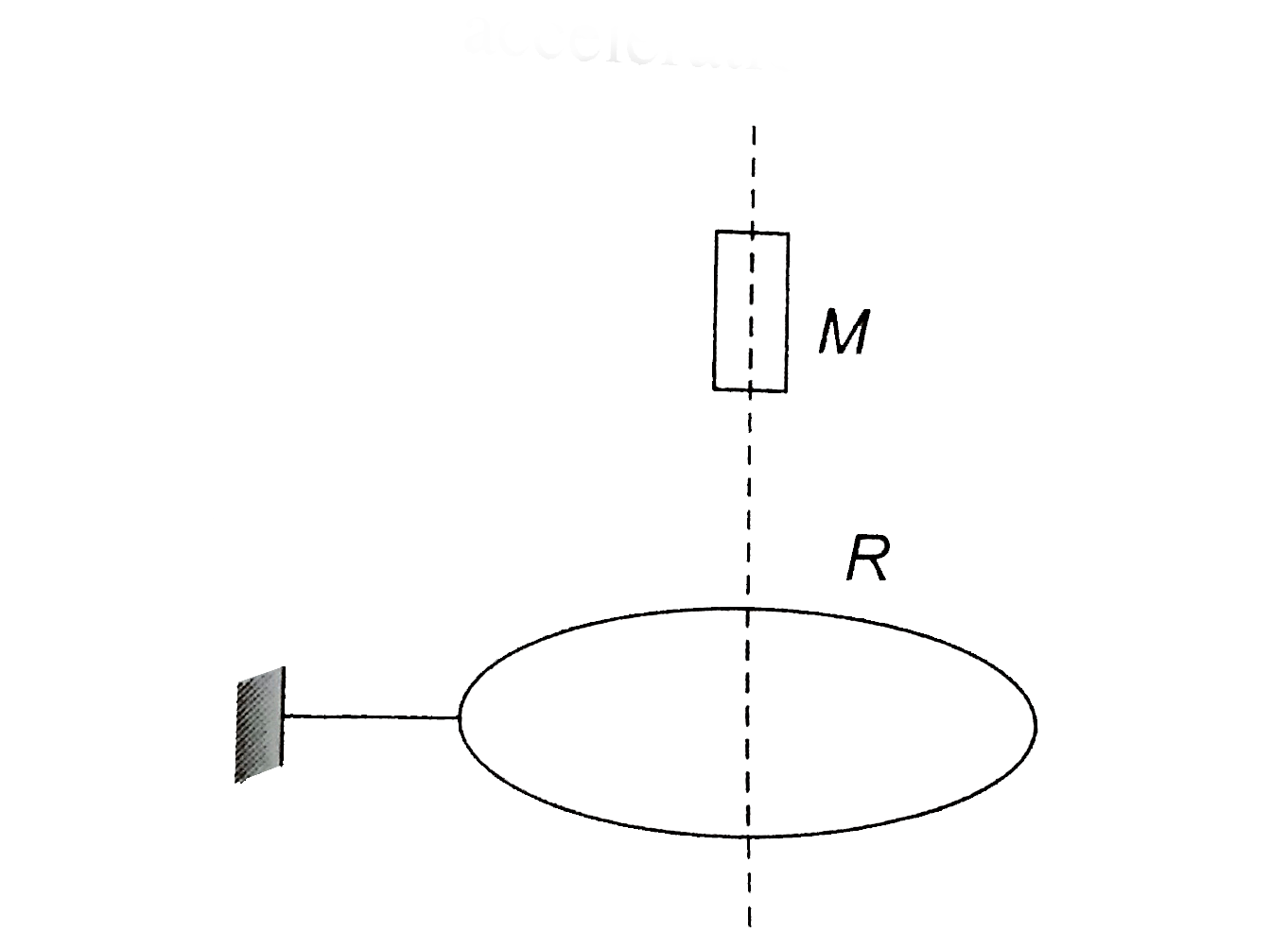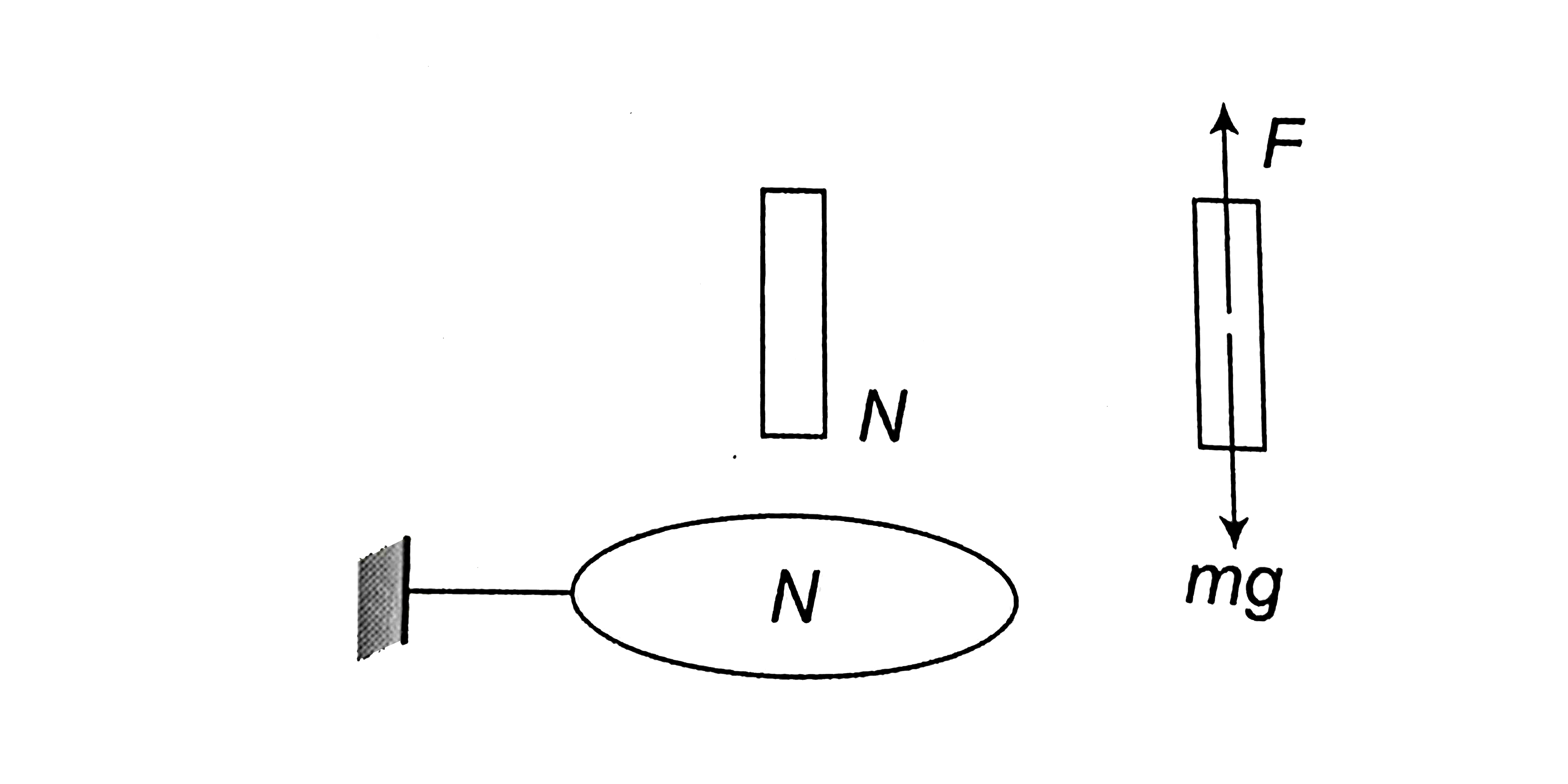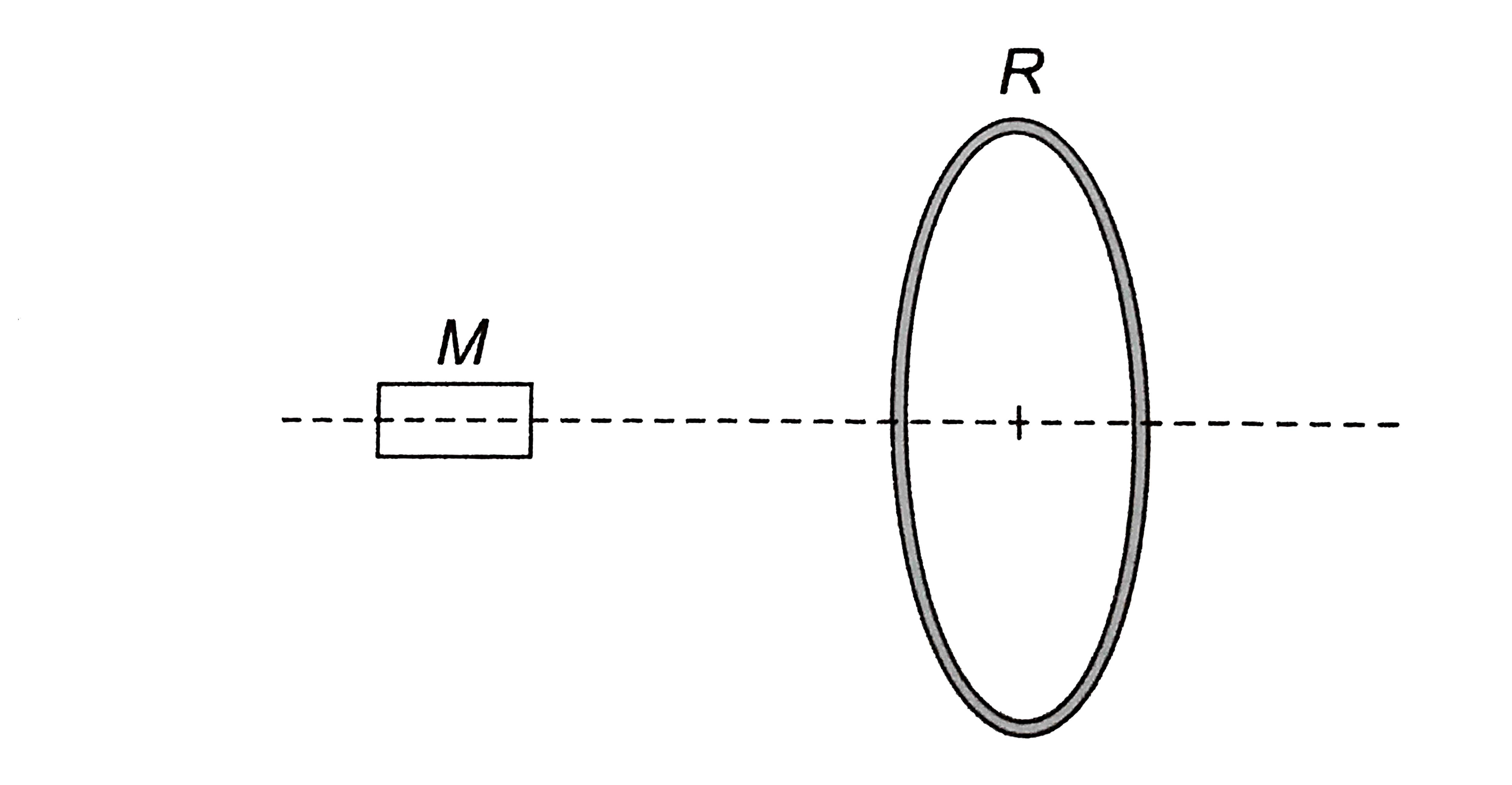A small magnet M is allowed to fall through a fixed horizontal conducting ring R . Let g be the acceleration of M will be
(i) <g when it is above R and moving towards R
(ii) >g when it is above R and moving towards R
(iii) <g when it is below R and moving away from R
(iv) >g when it is below R and moving away from R

(i), (iii)
(ii), (iv)
(i), (ii)
(ii), (iii)
The correct Answer is:A
Net forceltmg
Net forceltmg


Topper's Solved these Questions
Similar Questions
Knowledge Check
- Question 1 - Select One or More
A small magnet M is allowed to fall through a fixed horizontal conducting ring R. Let g be the acceleration due to gravity. The acceleration of M will be
A(a) <g when it is above R and moving toward RB(b) >g when it is above R and moving toward RC( c) <g when it is below R and moving away from RD( d) >g when it is below R and moving away from R - Question 2 - Select One or More
In the previous question, the directions of the curent flow in the ring when M is above R and below R will be
Athe same in all casesBopposite in all casesCthe same only if the N-pole of M moves towards R when M is above RDthe same only if the S-pole of M moves towards R when M is above R - Question 3 - Select One
In the previous question, the directions of the current flowing in the ring, when M is above R and below R will be
Athe same in all casesBopposite in all casesCthe same only if N-pole of M move toward R when M is above RDthe same only if S-pole of M move toward R when M is above R
A conduting ring R is placed on the axis of a bar magnet M . The plane of R is perpendicular to this axis. M can move along this axis
 View Solution
View SolutionThe acceleration due to gravity is g at a point distant r from the centre of earth of radius R. If r<R, then
View SolutionCentripetal acceleration of a particle of mass m moving in a circle of radius r is 4/r2. What is the angular momentum of the particle ?
View SolutionA charge q is accelerated through a potential difference V . It is then passed normally through a uniform magnetic field , where it moves in a circle of radius r . The potential difference required to move it in a circle of radius 2 r is
View SolutionA planet moves around the sun in an elliptical orbit. When earth is closest from the sun, it is at a distance r having a speed v. When it is at a distance 4r from the sun its speed will be:
View Solution



